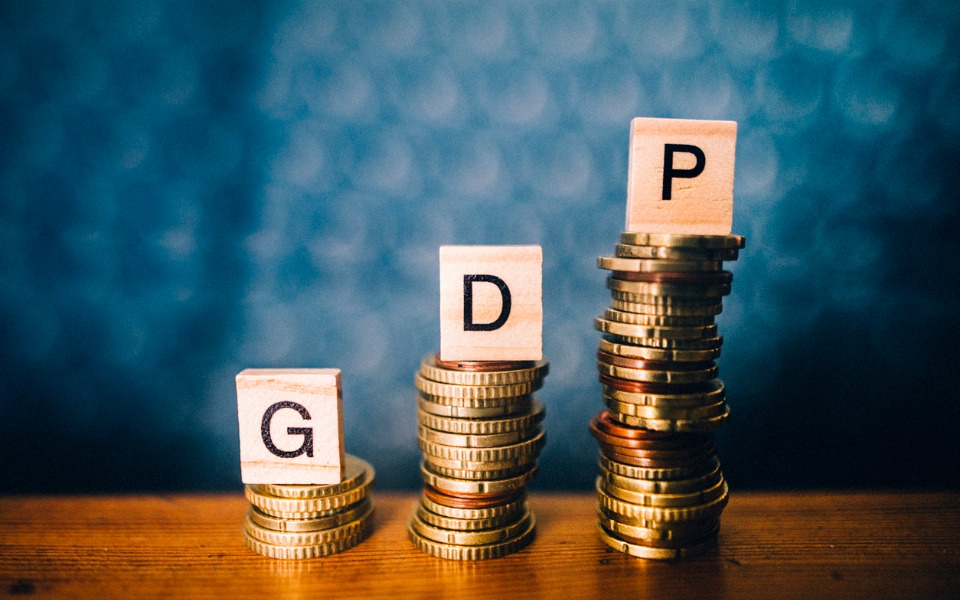
India's GDP to grow at 6 per cent in April to June: Survey

India’s economy will grow at a median rate of 6 per cent during the first quarter of the current financial year ended June 30, according to a Ficci report.
The country’s economy grew at 8.2 per cent in April-June 2018-19. The growth numbers for the first quarter are expected to be released by the Central Statistics Office next week. “The recently released unemployment numbers by NSSO reaffirm the grim situation with regard to employment in the country,” said Ficci Economic Outlook Survey. It pegged the annual median GDP growth forecast for 2019-20 at 6.9 per cent, with a minimum and maximum estimate of 6.7 per cent and 7.2 per cent, respectively.
The median is the middle number in a sorted, ascending or descending list of numbers which can be more descriptive of a data set than the average. A majority of the participating economists in the survey suggested the RBI will continue its accomodative stance, with a further cut in the repo rate in the remaining part of 2019-20.
They felt that the prevailing real interest rates were high. They also signalled that tardy deposit growth is haunting the banks as it is limiting their ability to lend and is preventing adequate transmission. The participants identified four key areas of improvement that would help create more jobs: cost of doing business; regulatory reforms; labour reforms and announcement of sector specific special packages. They observed that slower global growth will impact India’s growth prospects going forward.
In fact, economists unanimously indicated that India’s potential growth rate would be between 7-7.5 per cent, which is lower than the 8 per cent plus potential growth rate estimated until a few years back, Ficci stated. However, a majority of participants felt that potential GDP growth would settle at 7.5 per cent.
The participants were skeptical and divided about replicating the previous high growth performance of over 8 per cent and sustaining it at that level, Ficci stated. Those who were optimistic believed that a turnaround would be challenging given the current global environment and could take at least three to four years, it added.
To achieve India’s potential growth rate, the economists suggested boosting agriculture, strengthening micro, small and medium enterprises (MSMEs), undertaking factor market reforms and enhancing avenues for infrastructure financing. A factor market, also referred to as the input market, is a place where companies buy what they need to produce their goods and services. The survey was conducted during June-July 2019 amongst economists belonging to the industry, banking and financial services sectors.
While the median growth forecast for agriculture and allied activities has been put at 2.2 per cent for 2019-20, the industry and services sector are expected to grow by 6.9 per cent and 8 per cent respectively during 2019-20, the survey revealed. The outlook of participating economists on inflation also remains benign. The median forecast for Wholesale Price Index based inflation rate for 2019-20 has been pegged at 2.9 per cent, with a minimum and maximum estimate of 2.1 per cent and 5.7 per cent, respectively.
Besides, the median forecast for the Consumer Price Index is 3.7 per cent for 2019-20 with a minimum and maximum estimate of 3.4 per cent and 4.1 per cent, respectively. However, according to the survey, concerns remain on external front with median current account deficit forecast pegged at 2.3 per cent of GDP for 2019-20. Merchandise exports are expected to grow by 3.6 per cent, while imports are expected to grow by 4 per cent during the year.
Overall decline in global growth forecasts, escalating trade tensions, uncertainty around Brexit and foggy outlook on international crude oil prices have emerged as key concerns on the external front. The economists opined that it was necessary to ensure availability of capital and access to diversified long-term capital sources for carrying out productive investments in the economy. They felt borrowing costs should be lower to drive investments and employment in the country. They said greater efforts are required to develop the bond market, non-bank financial sector, and the stock exchanges. Economists also felt the need for establishing a long-term development finance institution on a priority basis.

